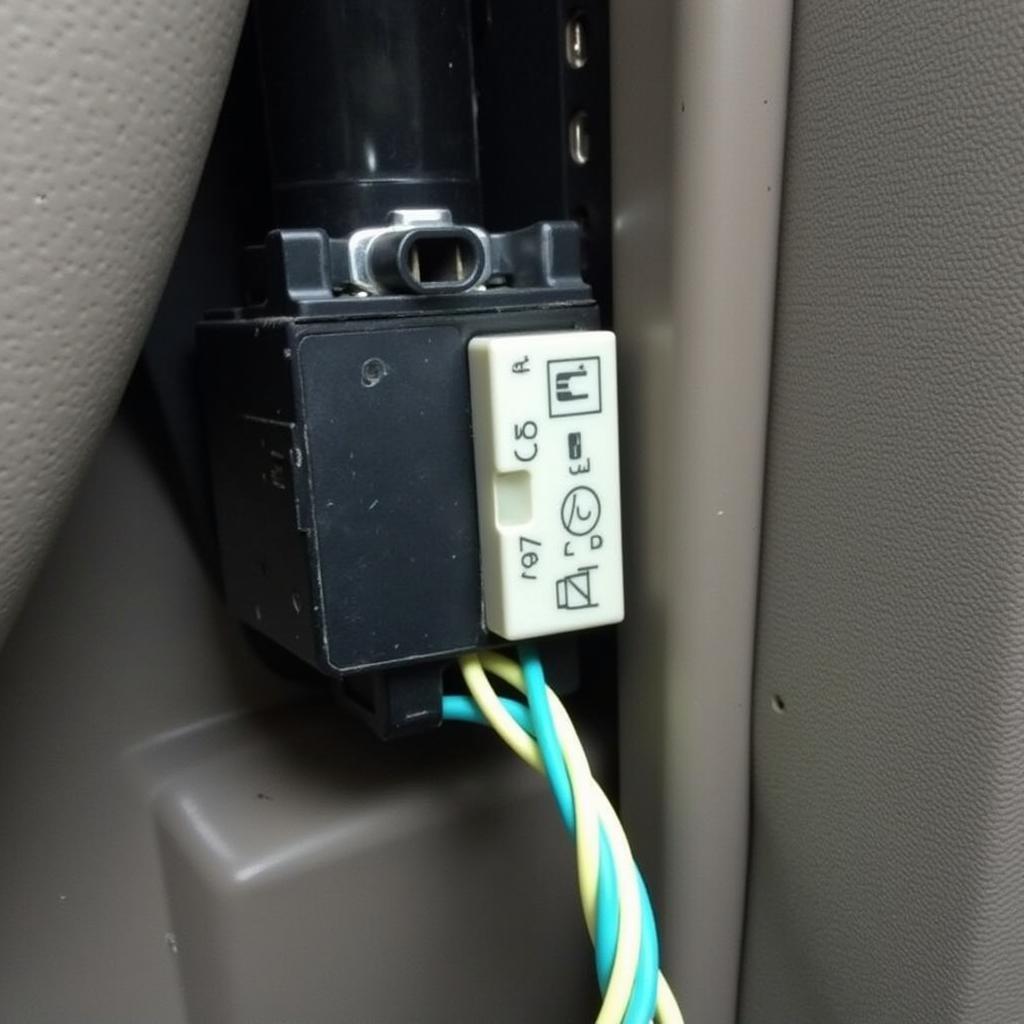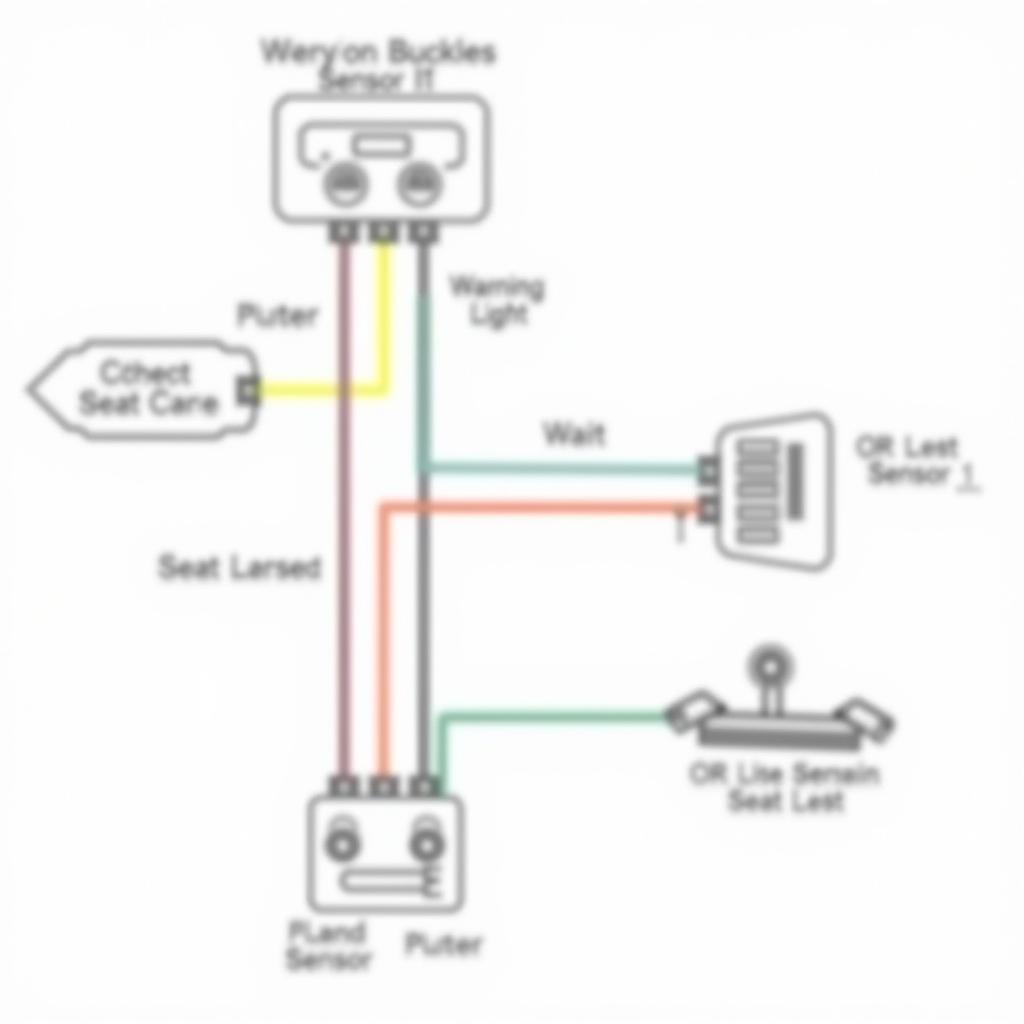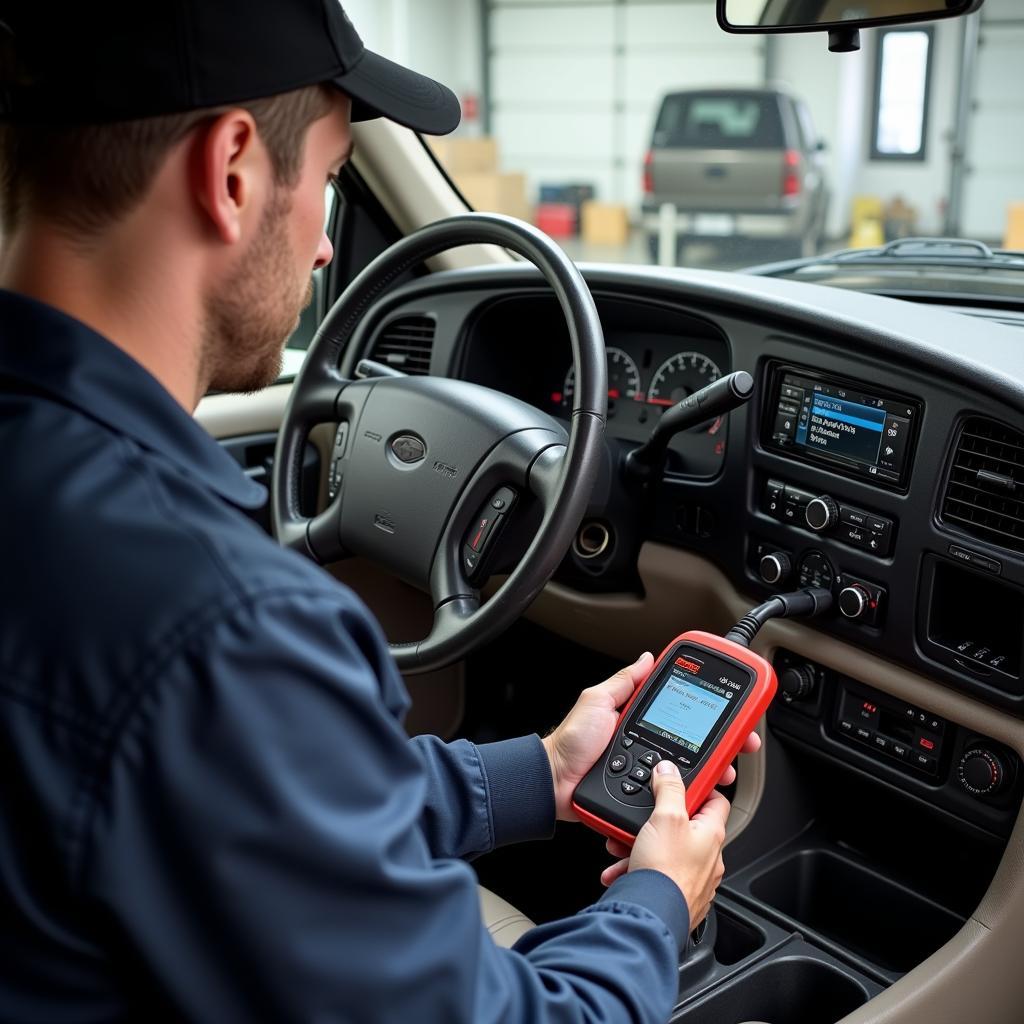The 1999 GMC Yukon seat belt warning light can be a persistent annoyance, but understanding its causes and solutions can save you time and money. This guide provides comprehensive troubleshooting steps, from simple checks to more advanced diagnostic techniques, to help you address the 1999 gmc yukon seat belt warning once and for all. We’ll cover common issues, DIY fixes, and when professional help is needed.
Understanding the Seat Belt Warning System in Your 1999 GMC Yukon
The seat belt warning system in your 1999 GMC Yukon is designed to enhance safety by reminding occupants to buckle up. The system typically includes sensors in the seat belt buckles, a warning light on the dashboard, and sometimes an audible chime. When the ignition is on and a seat belt isn’t fastened, the system activates the warning light and chime. However, sometimes the system can malfunction, triggering the warning even when the seat belts are properly fastened.
1999 gmc yukon seat belt warning part 8027 15969639
Common Causes of a 1999 GMC Yukon Seat Belt Warning
Several factors can trigger a false seat belt warning in a 1999 GMC Yukon. These include:
- Faulty Seat Belt Buckle Sensor: The most common culprit is a malfunctioning sensor in the buckle itself. This sensor detects whether the buckle is engaged and sends a signal to the warning system.
- Wiring Issues: Damaged or corroded wiring connecting the buckle sensor to the warning system can interrupt the signal, leading to a false warning.
- Seat Belt Pretensioner Problems: The pretensioner is a safety device that tightens the seat belt in a collision. Issues with the pretensioner system can sometimes trigger the seat belt warning light.
- Faulty Warning Light or Chime: While less common, a malfunctioning warning light or chime itself can also be the problem.
- Software Glitches: In some cases, a software glitch in the vehicle’s computer system can trigger the warning light.
 1999 GMC Yukon Seat Belt Buckle Sensor Closeup
1999 GMC Yukon Seat Belt Buckle Sensor Closeup
Troubleshooting the 1999 GMC Yukon Seat Belt Warning
Before rushing to a mechanic, try these troubleshooting steps:
- Check the Obvious: Ensure all seat belts are properly fastened. Sometimes a slightly loose buckle can trigger the warning.
- Inspect the Buckle: Visually inspect the buckle for any signs of damage or debris. Try cleaning the buckle with compressed air.
- Check the Wiring: Examine the wiring beneath the seat for any signs of damage, corrosion, or loose connections.
- Try Resetting the System: Disconnect the battery’s negative terminal for a few minutes and then reconnect it. This can sometimes resolve software glitches.
 1999 GMC Yukon Seat Belt Wiring Diagram
1999 GMC Yukon Seat Belt Wiring Diagram
When to Seek Professional Help for 1999 GMC Yukon Seat Belt Warning Part 8027
If the troubleshooting steps above don’t resolve the issue, it’s time to consult a qualified automotive technician. They can use diagnostic tools to pinpoint the problem and recommend the appropriate repair.
“A persistent seat belt warning light often points to a faulty buckle sensor,” says automotive expert John Smith, ASE Certified Master Technician. “While some DIY fixes can be effective, professional diagnosis can ensure accurate repair and prevent recurring issues.”
1999 gmc yukon seat belt warning part 8027 1596939
Advanced Diagnostic Techniques for 1999 GMC Yukon Seat Belt Warning
Advanced diagnostic techniques, typically performed by automotive technicians, involve using specialized tools to read error codes and analyze the seat belt system’s performance. This can pinpoint the exact location and nature of the fault.
 Automotive Technician Diagnosing Seat Belt System
Automotive Technician Diagnosing Seat Belt System
Conclusion: Addressing the 1999 GMC Yukon Seat Belt Warning
Addressing the 1999 gmc yukon seat belt warning is crucial for both safety and peace of mind. By following the troubleshooting steps and seeking professional help when needed, you can ensure a properly functioning seat belt system and a quieter, safer driving experience.
“Remember, a functioning seat belt system is paramount for safety,” adds John Smith. “Don’t ignore a persistent warning light.”
FAQ
-
Can I drive my 1999 GMC Yukon with the seat belt warning light on? Yes, but it’s not recommended. While the warning light itself won’t prevent the vehicle from operating, it indicates a potential issue with the seat belt system that could compromise safety in a collision.
-
How much does it cost to fix a seat belt warning light in a 1999 GMC Yukon? The cost can vary depending on the cause and the specific repair needed. A simple buckle replacement might be relatively inexpensive, while more complex wiring or pretensioner repairs can be more costly.
-
Can I disable the seat belt warning chime in my 1999 GMC Yukon? While it’s technically possible to disable the chime, it’s strongly discouraged. The chime serves as an important safety reminder and disabling it could increase the risk of injury in an accident.
-
Is it safe to replace the seat belt buckle myself? Replacing the buckle itself can be a relatively straightforward DIY task for those with basic mechanical skills. However, if the issue involves wiring or other components, it’s best to consult a professional.
-
Can a faulty seat belt sensor cause the airbag light to come on? In some cases, issues with the seat belt system can trigger other warning lights, including the airbag light. A comprehensive diagnosis is necessary to pinpoint the root cause.
-
How often should I have my seat belts inspected? It’s a good practice to have your seat belts inspected during routine maintenance checks, typically at least once a year or as recommended in your vehicle’s owner’s manual.
-
Can extreme temperatures affect the seat belt warning system? While less common, extreme temperatures can sometimes affect the performance of electronic components, including the seat belt sensors.

